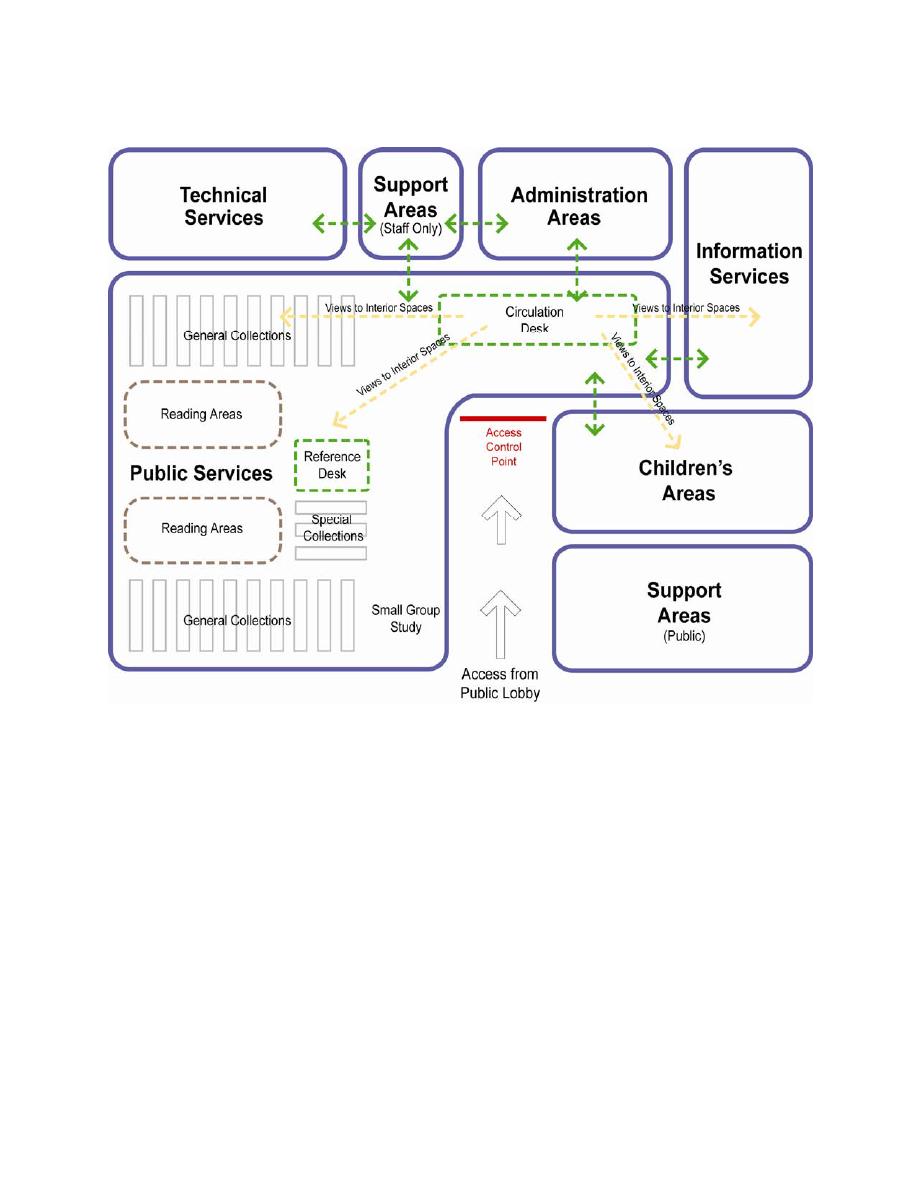
UFC 4-740-20
1 May 2006
4-2.1
Figure: Building Functional Area Relationships
4-3
PUBLIC SERVICES
The component spaces for public services areas include reader stations, casual reading
areas, study areas for individual and group use, general collections storage, reference
materials, periodicals, casual browsing, and computer book searches using the On-line
Public Access Catalog (OPAC) computer stations.
4-3.1
Primary Design Considerations
Design public services areas with the main reading space as the focal point. Areas for
periodicals, reference collections, and audio/visual stations need not be in separate
rooms, but should be well defined. Use alcoves, shelves, furnishings, level changes,
and architectural elements to define different spaces. Organize public services area
functions to match typical library use sequences starting at the entrance and proceeding
on to the circulation desk, OPAC computer stations, book stacks, and reading areas.
Locate functions that require frequent staff assistance, such as OPAC computer
stations and audio/visual stations, close to the circulation desk. Organize shelving for
easy collection searches and to accommodate changes in collection sizes and
organization. Generally, shelves placed continuously along the edges of a space make
4-2


 Previous Page
Previous Page
